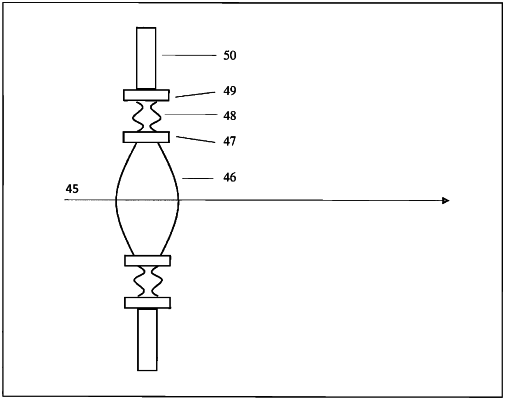| CPC A61F 2/1637 (2013.01) [A61F 2/1618 (2013.01); A61F 2/1654 (2013.01); A61F 2/1656 (2013.01); A61F 9/008 (2013.01); A61F 2002/169 (2015.04); A61F 2009/0087 (2013.01)] | 31 Claims |

|
1. An intraocular lens for providing an extended depth-of-field, said intraocular lens comprising:
a central optical zone comprising an anterior optical surface;
a first periphery region comprising a virtual aperture, said virtual aperture surrounding said central optical zone, said virtual aperture comprising an anterior virtual aperture surface; and
a second periphery region comprising a haptic for positioning the intraocular lens within an eye, wherein said second periphery region is separated from said central optical zone by at least the first periphery region;
wherein a first plurality of light rays incident on said anterior optical surface pass through said central optical zone to form an image on a retina; and
wherein a second plurality of light rays incident on said anterior virtual aperture surface are dispersed widely downstream from the intraocular lens towards and across said retina, such that said image comprises said extended depth-of-field and further wherein said virtual aperture reduces monochromatic and chromatic aberrations in said image;
wherein at least one of said anterior virtual aperture surface and a posterior virtual aperture surface comprises one of a prism profile or a negative lens profile.
|